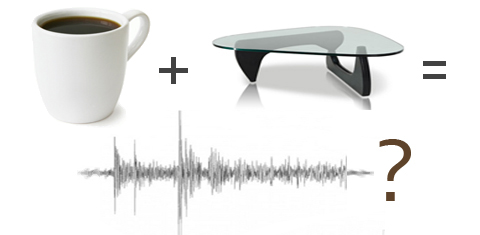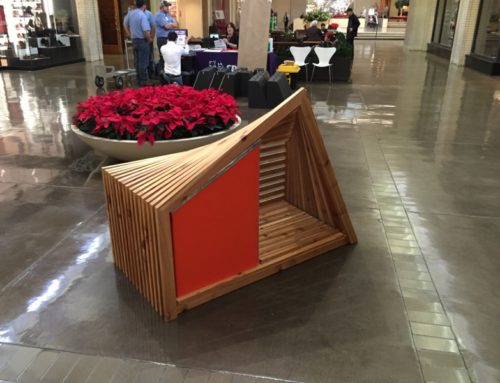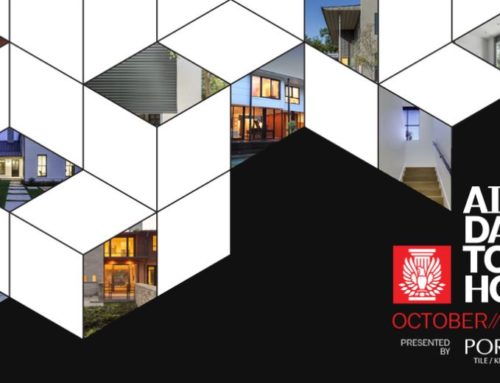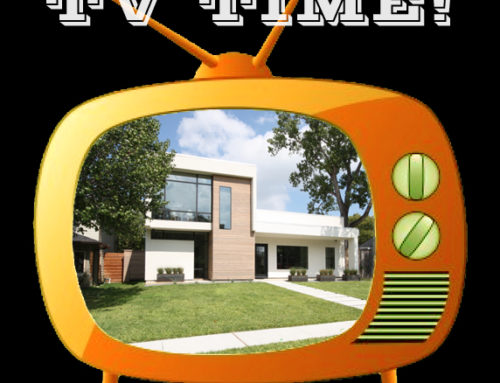I was recently commissioned to design and build a unique, modern coffee table for a husband & wife client. They searched the internet and local furniture showrooms without finding something that speaks to their tastes and space, and we randomly struck up a conversation about how it can be difficult to find the ideal piece. I sporadically build custom furniture items I design for clients, and after a brief discussion of budget and needs (e.g. the Program) I dove into Schematic Design.
The process of designing modern furniture, cabinetry, or any object largely parallels the design process for a house. Learn about the entire residential design process here for a more broad discussion on the topic. I pride myself in being both a modern architect and builder – I believe every architect should know more than the basic principles about how things should be put together. In my years in the profession, knowing how to build furniture joint by joint with long-lasting joinery, or knowing the intricacies of residential framing or how plumbing lines go together has served me well. I’ve been the hands-on guy in all sorts of situations and the knowledge of how to do it right is key. And DIY projects around my contemporary house are many – bonus!
Unfortunately I’ve also seen many young designers (and some experienced ones too) draw things with little clue about how to construct them, and even less idea on how much a certain method may cost. I’ll rant about cost elsewhere but suffice it to say I’ve never worked on any design project except for one where cost wasn’t important.
Back to the coffee table design. We had a good idea of the budget for the coffee table, and the programming conversation went something like this:
Client (Him): “We need a bigger coffee table than this current one – it’s too small. It worked in our old apartment but now we’ve got stuff all over it and need more room.”
Client (Her, to Him): “I need to move it around the living room when I do yoga in there. I hate dragging the table across the rug, and it’s heavy.”
Me: “OK [looking at current table] it is a 2-foot by 4-foot table and it does look a little small in your room. And the glass top adds weight – I can see why you have to drag it out of the way. What if we look for a solution that doesn’t have a glass top?”
Client (Her): “That works. I do yoga a few times a week and hate moving it when it’s difficult. You know, the glass top is nice for when we entertain and have trays on the table. Without one, will the table top hold up to use?”
Client (Him): “Yeah I eat at the coffee table sometimes. It needs to last and be sort of impervious to spills.”
Me: “Good input [taking quick notes]. There are a number of finishes we can use that hold up well. Few natural materials are a silver bullet when it comes to the anti-scratch department, but with proper care furniture can last a very long time. I could consider a metal top, maybe some kind of aluminum for lightness, but it still scratches if you’re not careful.”
The discussion continued and we hit upon a Eureka! moment when I noticed a geology newsletter sitting on the table. The client (her) is a geologist and the newsletter cover story was about the small earthquakes the Dallas/Irving area has recently experienced. We chatted about that for a few minutes and then I was heading back to the office. On the drive home my thoughts on the earthquakes led me to conjure up designs where the table itself was the subject of an earthquake – what might it look like? Back in the office I started sketching.
I realized that if the “earthquake” were to split the coffee table into a few pieces, each piece would be lighter and more mobile. Of course any table must be solid and steady, too. But I eventually arrived at the following schematic designs which when I presented it back to the clients garnered a “cool” and an “awesome” from each of them. As the two tables are similar in form but made of different materials, we talked about the two (aluminum vs. wood) and I recommended the wood option as it would blend in with other furniture the couple has. The aluminum option, while slick, may have been a little too distanced from their other furnishings.
To size the table we moved the current coffee table out of the way and I tried a few different sizes laid out on the floor with loose paper. We settled on an approximate size and voila! wrapped up most of the design work.
And hence the coffee table I have dubbed the-
Seismic/Coffee\Table
I’ll post about the documentation I use to build it and some progress photos as the fabrication starts.
____________________________
This post was originally written before re-branding as Eckxstudio for Modern Architecture at the end of 2017.
At Eckxstudio for Modern Architecture, we design unique and stunning projects, individually crafted for our clients’ lives. We’re passionate about listening to your needs, wants and desires as inspiration to design the dream home you’ll never want to leave.









Leave A Comment